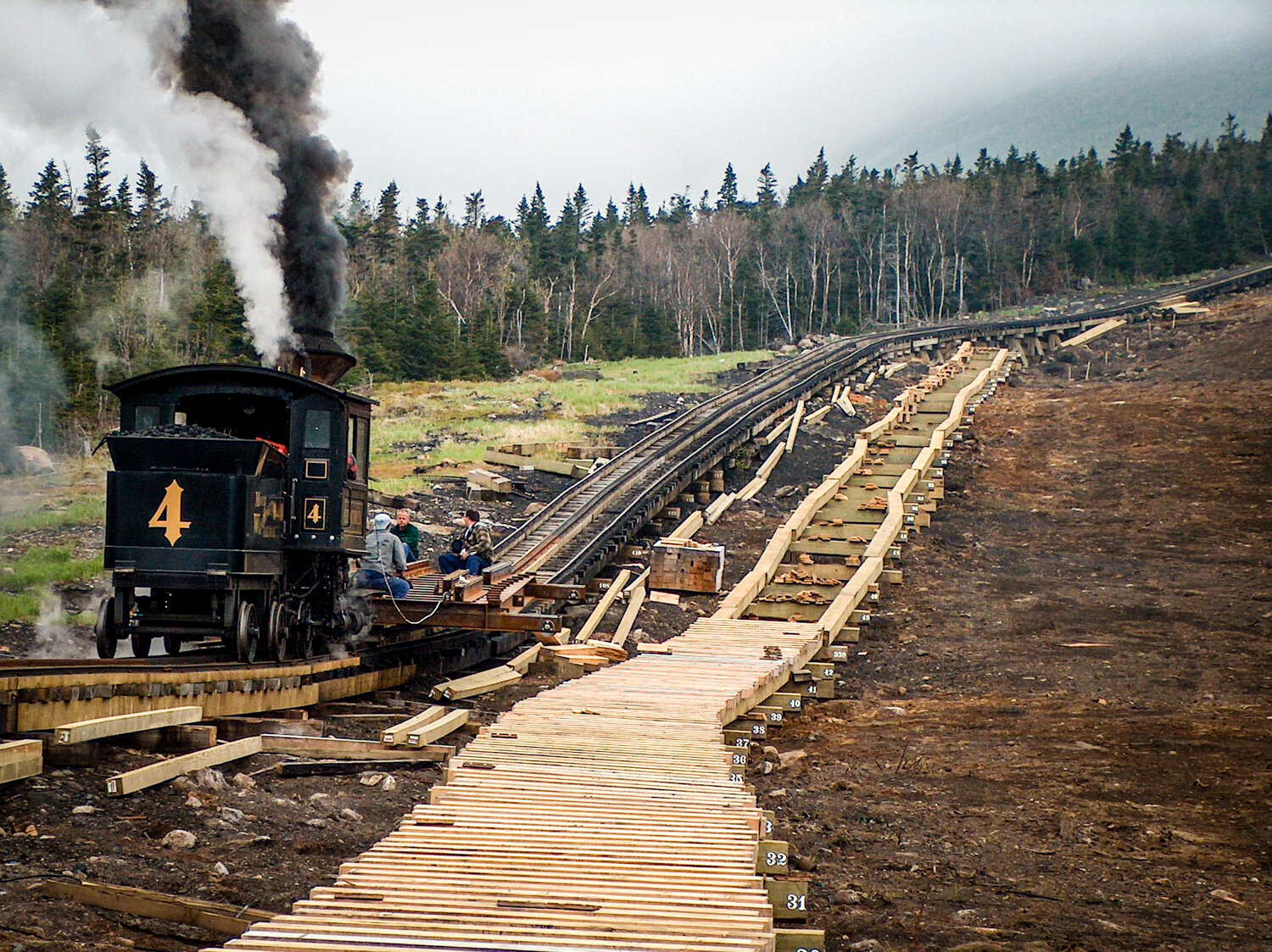
A far better way to switch tracks
This video demonstrates the differences between the manually thrown and automated switch systems.
Sylvester Marsh’s original railway was comprised of a single track from base to summit. As the popularity of the Cog grew, the ability to run multiple trains in opposing directions became necessary, and that challenge resulted in what many have called “the world’s most complicated track switch”.
In order to run trains in opposing directions on a railway with only one track, sidings were used to move up mountain trains temporarily out of the way of one coming down the mountain. The center rack track prohibited a traditional switch design, so to get into and out of these short dead end sections of track, as many as 9 very heavy pieces of steel rack and rail had to be moved by hand. For every passing movement, the “switch” had to be literally built and rebuilt 4 times, perfectly and very quickly.
Even though the switches and sidings remained in service until the late 1990s, they were never good enough for owner Wayne Presby and General Manager Charley Kenison. They believed that a modern solution was needed to meet demand and to improve the overall experience.
In 2000, the sidings and switches at Skyline and Waumbek were removed, and construction began on a 2100’ passing loop, a section of double track near the Waumbek water tank. Controlling access to the loop are upper and lower transfer tables: solar powered, hydraulically operated sections of track mounted on sliding steel platforms.
Similar switches were installed at Marshfield Base Station and at the summit. Today, the combination of the passing loop, automated switches and state of the art biodiesel locomotives allows us to safely and efficiently run as many as 7 trains at the same time, serving well over 125,000 visitors a year.

